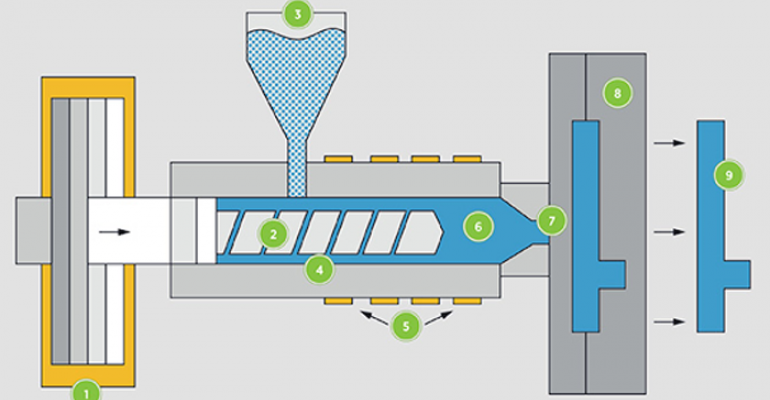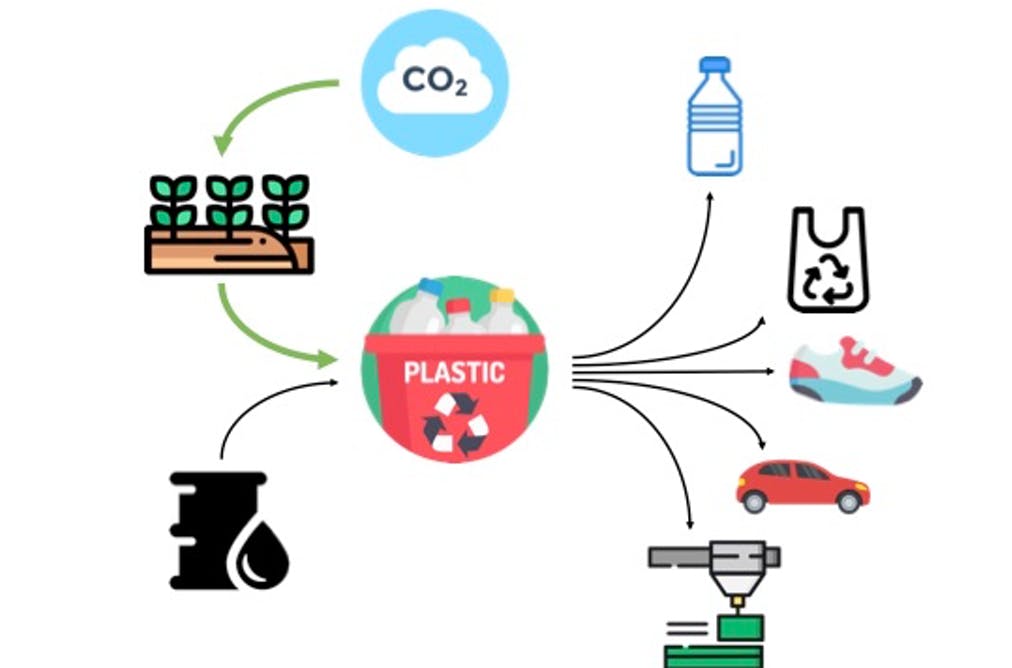As referred to in our previous article, injection molding refers to when plastic pellets are pressed into a mold cavity and under pressure and heat become a certain shape. Injection molding produces low scrap rates relative to other traditional manufacturing processes like CNC machining which cut away substantial percentages of an original plastic block or sheet. This however can be a negative relative to additive manufacturing processes like 3D printing that have even lower scrap rates. Overall this is a method that does not produce a lot of scrap through initial production. The downsides that are associated with injection molding include high costs in terms of startup, molding, and tooling. We will compare this manufacturing technique in terms of sustainability vs additive manufacturing.
Transportation waste is not as large of a concern when it comes to injection molding. It is important to have one’s material ready before they are to place it into an injection molding apparatus. The layout of one’s factory or fabrication environment is more critical towards this type of waste. Similar thoughts can be arrived at in terms of additive manufacturing. One typically must feed an additive manufacturing device with material, and transportation of materials is reliant upon the layout of one’s factory or fabrication environment.
Inventory waste is something to keep in mind for this type of manufacturing. There is a high production rate that occurs with an injection molding system. This rate is reliant on two factors:
- Cycle time
- Mold Cavitation
Cycle time refers to how long it takes to complete a function, job, or task from start to finish. Cycle time is used in differentiating total duration of a process from its run time. Mold cavitation refers to the creation of an empty space that forms the basis of our molding process. So depending on the size of a mold, the cycle time shall vary. One can create a large amount of product fairly quickly with an injection mold system. This can lead to extra inventory than needed if organizations are freely creating objects for a 3rd party. This could be a case where a supplier is just making bulk production for when a 3rd party company needs more product at a later date. Additive manufacturing production rate is based on cycle time and the size of the object to be printed. This causes less inventory waste as there is a lot of time associated with printing a lot of materials at the moment.
Waiting is a large differentiator in terms of injection molding vs additive manufacturing. 3D Printing technology has vastly increased over the years in terms of efficiency and speed. However, processes such as injection molding, have well established production rates that have been sharpened through decades of use.
Over-processing is not as much of a concern for both of these methods of manufacturing. Injection molding and 3D printing are both great at building quick prototypes of designs. I would argue that the biggest pain point is under processing. Post processing is a big issue when it comes to 3D printers. An injection molded part does have issues in terms of post processing, but not as glaring as most 3D Printing systems at the moment. This then leads to more time and energy spent on production.
Plastic and the Circular Economy
Finally, we will discuss the ability to recycle and reuse products that have been created through injection molding. Re-melting & melt filtration are required for the recycling of injection molded parts. Proper re-melting of the recycled material occurs under very low shear rates in the extruder and at the lower end of the melting temperature. Shear rate refers to the rate at which a progressive shearing deformation is applied to some material. The shearing deformation refers to when there is a deformation of a material substance in which parallel internal surfaces slide past one another. The objective is to gently re-melt the original material, which ensures maintenance of the material properties. A proper melt filtration process will remove any contaminants in the melt like cellulose, metal or wood pieces. Filtration refers to any of various mechanical, physical or biological operations that separates solids from fluids (liquids or gases) by adding a medium through which only the fluid can pass. State of the art melt filtration is fully automated and does not require manual operation steps. The melt is filtered continuously at low pressure and can remove particles as small as 70 microns in diameter. Similar processes can be applied to 3D printing materials as well.
Overproduction is a key point in terms of sustainability within both of these processes. It is important to consider the high startup costs associated with injection molding. It typically requires a lot of money to build objects through injection molding because it is a process that creates objects in large quantities. This can lead to having to hold various products within an inventory for an extended period of time. This is waste as these products may have been created without a definite need for them in the present. 3D Printing takes more time to create products, but they can be done with an intent to make a specific amount for an order instead of printing extra for use later.
Throughout this series, it is important to recognize that 3D Printing is a great solution. We still have to be critical of it as a viable option in traditional manufacturing settings. We must have a critical eye in terms of waste reduction. This also must include waste reduction in terms of faulty processes. This will allow us to have an interesting examination of the circular economy.





15 Replies to “3D Printing & the Circular Economy Part 3: Injection Molding”
Comments are closed.